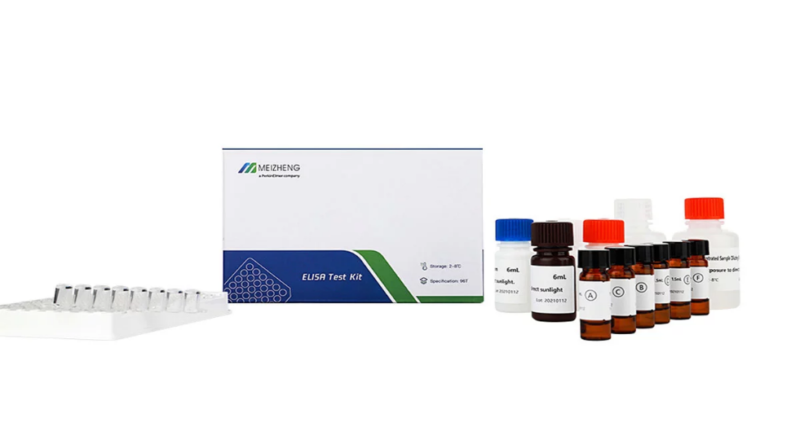Mycotoxin Test Kit: Ensuring Safety and Quality in Food and Agriculture
Introduction
Mycotoxins are toxic compounds produced by certain types of moulds. These moulds can contaminate crops, food products, and animal feed, posing severe health risks to humans and animals alike. With the increasing awareness of food safety, the importance of testing for mycotoxins has never been higher. This is where mycotoxin test kits come into play, providing a reliable way to detect and manage these harmful substances.
Understanding Mycotoxin Test Kits
What is a Mycotoxin Test Kit
A mycotoxin test kit is a tool designed to detect the presence of mycotoxins in various samples, such as food products, grains, and animal feed. These kits are essential for ensuring that the products meet safety standards and are free from harmful levels of mycotoxins.
Types of Mycotoxin Test Kits
Rapid Test Kits
Rapid test kits are user-friendly and provide quick results, often within minutes. They are ideal for on-site testing and initial screenings.
ELISA Test Kits
Enzyme-linked immunosorbent Assay (ELISA) test kits are highly sensitive and specific, making them suitable for detailed laboratory analysis.
Lateral Flow Assay Kits
Lateral flow assay kits are similar to pregnancy tests, offering simple and quick results. They are useful for field testing and can detect multiple mycotoxins simultaneously.
PCR-Based Test Kits
Polymerase Chain Reaction (PCR) test kits detect the genetic material of moulds, offering precise identification of specific mycotoxin-producing fungi.
Why Use a Mycotoxin Test Kit
Health Risks of Mycotoxins
Mycotoxins can cause a range of health issues, from acute poisoning to long-term effects such as cancer and immune system suppression. Regular testing helps prevent these health risks by ensuring contaminated products do not reach consumers.
Economic Impact of Mycotoxins
Contaminated crops and food products can lead to significant economic losses due to recalls, reduced market value, and increased regulatory scrutiny. Testing helps safeguard the financial interests of producers and suppliers.
Legal Regulations and Compliance
Many countries have strict regulations regarding permissible mycotoxin levels in food and feed. Testing ensures compliance with these regulations, avoiding legal penalties and ensuring market access.
How Mycotoxin Test Kits Work
Sample Collection
Proper sample collection is crucial for accurate testing. Samples must be representative of the batch and free from cross-contamination.
Testing Procedure
Each type of test kit has a specific procedure, generally involving preparation of the sample, application to the test device, and waiting for the results.
Interpreting Results
Results interpretation varies by test type but generally involves comparing colour changes or reading data from a digital display. Understanding these results is critical for making informed decisions.
Choosing the Right Mycotoxin Test Kit
Factors to Consider
When selecting a test kit, consider factors such as the types of mycotoxins to be detected, sensitivity, specificity, ease of use, and cost.
Comparing Different Brands
Research and compare brands based on user reviews, technical specifications, and customer support.
Cost vs. Accuracy
While more expensive kits may offer higher accuracy and sensitivity, it’s essential to balance cost with the specific needs of your testing requirements.
Top Mycotoxin Test Kits in the Market
Pros and Cons
Each brand has its advantages and disadvantages. Romer Labs, for instance, is known for its high accuracy, while Neogen offers excellent customer support and user-friendly kits.
User Testimonials
Customer testimonials provide insights into real-world experiences with different test kits, highlighting their effectiveness and any potential issues.
Benefits of Regular Mycotoxin Testing
Ensuring Food Safety
Regular testing helps ensure that food products are safe for consumption, protecting public health and maintaining consumer trust.
Protecting Livestock
Mycotoxins can severely impact animal health, reducing productivity and increasing veterinary costs. Testing animal feed helps prevent these issues.
Maintaining Product Quality
Quality control is vital in the food industry. Regular mycotoxin testing helps maintain high product standards and brand reputation.
Challenges in Mycotoxin Testing
Limitations of Test Kits
The test kit is flawed. Some may have limitations in sensitivity or specificity, leading to false positives or negatives.
False Positives and Negatives
False results can occur due to various factors, including sample handling errors or inherent limitations of the test kit. It’s essential to understand these risks and take them into account.
Need for Professional Training
Proper training is required to use some test kits effectively. Misuse can lead to inaccurate results and potentially costly mistakes.
Innovations in Mycotoxin Testing
Advances in Technology
Technological advancements continually improve the accuracy, sensitivity, and ease of use of mycotoxin test kits.
Future Trends
Future trends include the development of more portable and user-friendly kits, integration with digital platforms for data analysis, and the ability to detect a broader range of mycotoxins.
Research and Development
Ongoing research is focused on developing new testing methods and improving existing ones, ensuring more reliable and efficient detection of mycotoxins.
DIY Mycotoxin Testing: Is It Worth It?
Pros and Cons of DIY Kits
DIY kits offer convenience and cost savings but may need more accuracy and reliability of professional testing.
Steps to Perform DIY Testing
DIY testing involves collecting samples, following the test kit instructions, and interpreting the results. It’s essential to follow the steps carefully to avoid errors.
When to Call a Professional
Professional testing is recommended in cases of high contamination risk or when precise results are critical.
Understanding Test Results and Actions to Take
Reading the Results
Understanding how to read and interpret test results is crucial. Results may indicate the need for immediate action or further testing.
Immediate Steps After Detection
If mycotoxins are detected, immediate steps include isolating contaminated products, notifying relevant authorities, and conducting further testing to assess the extent of contamination.
Long-Term Prevention Strategies
Implementing long-term strategies such as regular testing, proper storage conditions, and using mould-resistant crop varieties can help prevent mycotoxin contamination.
Case Studies: Real-World Applications of Mycotoxin Testing
Agriculture
Farmers use mycotoxin test kits to monitor crops, ensuring they meet safety standards and are suitable for sale and consumption.
Food Processing
Food processors rely on testing to maintain product quality and comply with regulatory requirements, preventing contaminated products from reaching consumers.
Animal Feed
Testing animal feed for mycotoxins helps protect livestock health and ensures the safety of animal-derived products like milk and meat.
Regulatory Standards for Mycotoxin Levels
International Guidelines
Organizations like the World Health Organization (WHO) and Food and Agriculture Organization (FAO) set international guidelines for mycotoxin levels.
Country-Specific Regulations
Different countries’ regulations may vary regarding permissible levels and testing requirements.
Impact on Global Trade
Compliance with mycotoxin regulations is crucial for international trade, as non-compliance can lead to trade barriers and economic losses.
Conclusion
Mycotoxin test kits are invaluable tools for ensuring the safety and quality of food and agricultural products. Regular testing helps prevent health risks, economic losses, and regulatory issues. Producers and processors can effectively manage mycotoxin contamination and protect public health by understanding how these kits work and choosing the right one.

